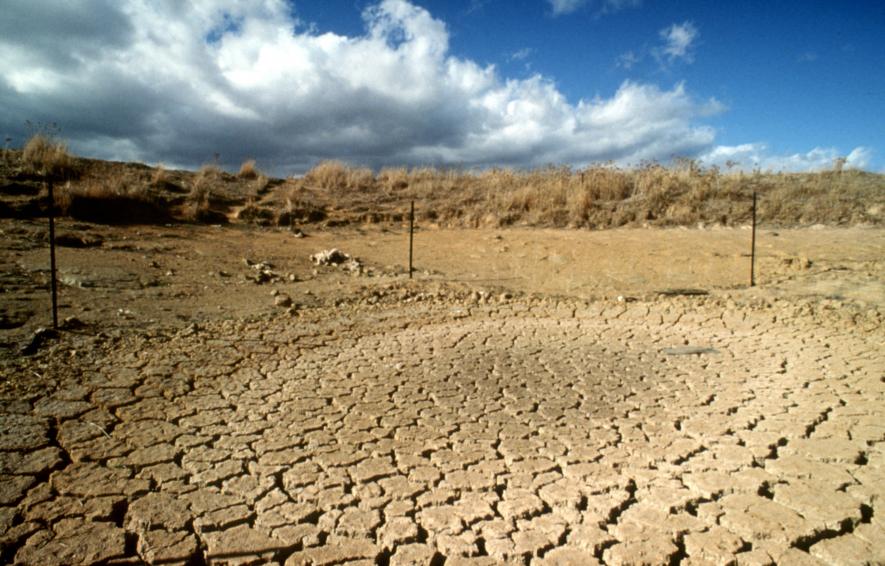Return of El Nino: Extreme Weather Warnings Issued Worldwide

Representational Image. Image Courtesy: Wikimedia Commons
Meteorological organisations predicted the return of El Nino this year, and the wait for its setting seems to be over. The National Oceanic and Atmospheric Administration (NOAA), US, declared on June 8 the starting of El Nino. With this, extreme weather conditions like cyclones in the Pacific Islands, heavy rainfall in South America and droughts in some parts of Asia and Australia are likely to occur.
It’s worth recalling that the latest El Nino occurred in 2016, and the world witnessed it as the hottest year on record. This year’s El Nino, which is a hot spell, coupled with warming due to climate change, can lead temperatures to new highs. The cooler counterpart of El Nino is called La Nina, which ended in March this year after being in place for three consecutive years.
NOAA said that there is a 56% chance that this year’s El Nino would reach its peak during winter in the Northern Hemisphere. It also said that the eastern Pacific Ocean surface temperature may rise to at least 1.5 degrees Celsius above the normal.
DECLARATION OF EL NINO
Two sources are most important to confirm whether El Nino has started: the NOAA and the Bureau of Meteorology (BOM), Australia. These two agencies use different ways of declaring the onset of El Nino, and BOM Australia is a bit stricter. The NOAA declares an El Nino when the surface temperatures in the eastern and central equatorial Pacific remains at around 0.5 degree Celsius higher than usual for a month and is expected to meet the three months Oceanic Nino Index (ONI) threshold.
The ONI indicates the average temperature threshold above the normal, which the NOAA defines as 0.5 degrees Celsius. Along with the ONI, the agency also looks for a weakening of the trade winds (the wind that usually blows from east to west along the equator and brings warm water from South America to Asia, which is weakened and reversed when El Nino is in place).
The BOM Australia, on the other hand, considers a threshold temperature of 0.8 degrees Celsius above the average in the eastern Pacific Ocean. On June 6, the Australian agency said there is a 70% chance that El Nino will develop this year.
THE ENSO CYCLE
A periodic climatic condition depends on the water temperature in the central and eastern tropical Pacific oceans. The surface water of a large area of the tropical Pacific moves in cycles between cool and warm by about 1 degree Celsius to 3 degree Celsius. These warm and cool cycles can range from three to seven years.
This alternating cool and warm pattern is known as the El Nino Southern Oscillation (ENSO), which impacts weather conditions of tropical areas worldwide. The ENSO cycle consists of La Nina and El Nino.
The ENSO cycle shifts from one phase to the other with a neutral phase where there is neither El Nino nor La Nina, and the surface temperature of the tropical Pacific is nearly close to the average. The World Meteorological Organisation (WMO) update suggests that the preceding La Nina phase has ended (in March), and there has been a neutral period, which is fast transiting to the El Nino phase.
The worry is that the already warm Earth, due to man-made climate change, may produce warmer days as far as El Nino exists, as it is the hotter phase of the ENSO cycle.
THE FEAR OF EXTREME WEATHER
In May, while indicating a fast-developing El Nino, the WMO also warned about extreme weather conditions in parts of the world. El Nino results in increased rainfall in South America, the US, Central Asia etc., while it may bring in droughts in South Asia, Australia, and Indonesia.
WMO secretary-general Petteri Taalas said in a statement, “We just had the eight warmest years on record, even though we had a cooling La Niña for the past three years, and this acted as a temporary brake on global temperature increase. The development of an El Niño will most likely lead to a new spike in global heating and increase the chance of breaking temperature records.” This is indeed worrisome.
Taalas further said, “The world should prepare for the development of El Niño, which is often associated with increased heat, drought or rainfall in different parts of the world. It might bring respite from the drought in the Horn of Africa and other La Niña-related impacts but could also trigger more extreme weather and climate events. This highlights the need for the UN Early Warnings for All initiative to keep people safe.”
INDIA FORECAST
It is worth mentioning here that Skymet, a private weather forecasting company, forecast below-normal monsoon rainfall in India this year. The Skymet report suggested that the Northern and Central parts of the country were at a higher risk of being rain deficient. It said Gujarat, Madhya Pradesh and Maharashtra would receive inadequate rain during the peak months of July and August. Similarly, Punjab, Haryana, Rajasthan and Uttar Pradesh would also see ‘less than normal’ rain this monsoon.
The Skymet report also mentioned the development of El Nino conditions over the tropical Pacific as a reason for the rain-deficient monsoon this year in India.
However, the government-owned India Meteorological Department (IMD) has predicted a normal monsoon. Skymet predicted 94% rainfall of the Long Period Average (LPA) with an error margin of +/-5%, while the IMD predicted a 96% rainfall of the LPA (with an error margin of +/-5%) during the same period.
Get the latest reports & analysis with people's perspective on Protests, movements & deep analytical videos, discussions of the current affairs in your Telegram app. Subscribe to NewsClick's Telegram channel & get Real-Time updates on stories, as they get published on our website.
























